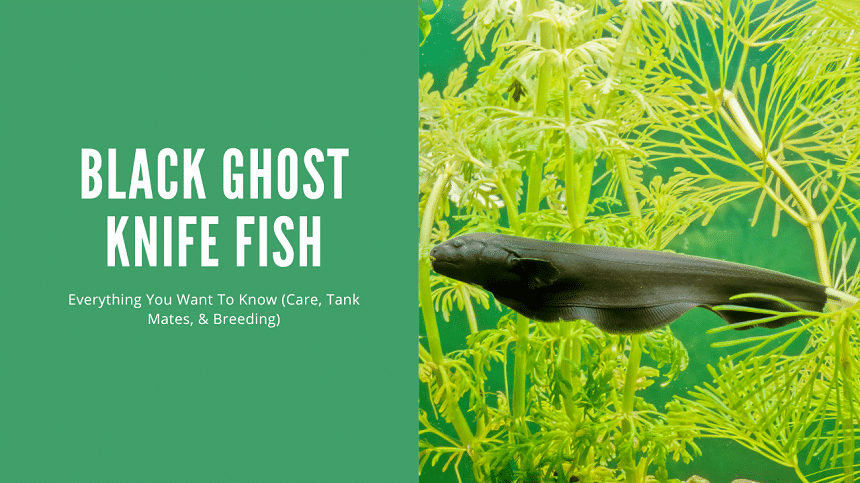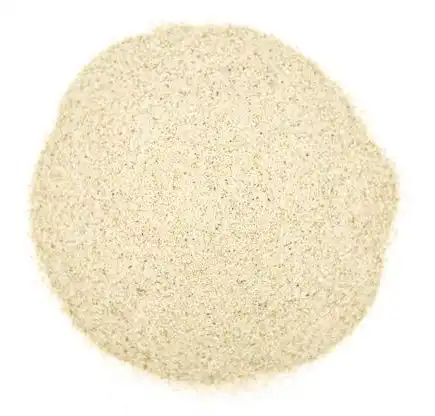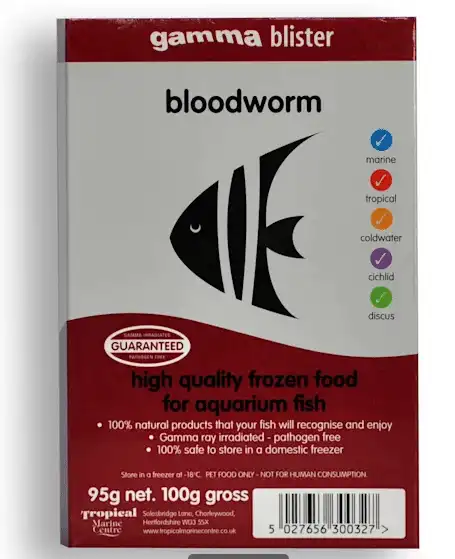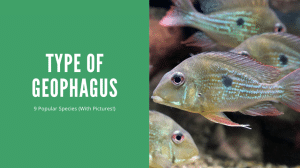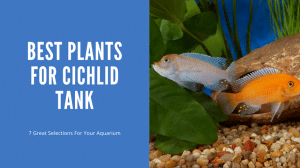Thank you for visiting! By the way… any links on this page that lead to products on Amazon and other stores/partners are affiliate links Aquarium Store Depot earns a commission if you make a purchase.
Are you ready for a thrilling journey to learn about the remarkable Black Ghost Knife fish? This species can generate and receive electric signals, navigate through murky waters as well as survive in their natural habitat. We’ll cover all aspects of this fantastic creature – from its distinctive attributes, tank setup, feeding habits to potential companions within an aquarium setting. As if that were not enough.
We shall also explore how challenging it is to breed these ghost knife fish plus steps needed for providing them with optimum care. Are you game? Let’s jump right in!
Key Takeaways
- Black Ghost Knife Fish require a specific environment and diet to thrive.
- They are a peaceful fish that is bullied easy, but also gets very large
- Choose your tankmates carefully, making sure they are peaceful and of similar size & temperament
- Meaty foods are best for them. Flake foods are not enough
- Practice responsible breeding by providing the correct conditions for fry growth & nutrition
Species Overview
| Scientific Name | Apteronotus albifrons |
| Common Names | Black Ghost Knife Fish, Ghost Knife Fish |
| Family | Apteronotidae |
| Origin | Amazon Basin, South America |
| Diet | Carnivorous |
| Care Difficulty | Intermediate |
| Activity | Nocturnal |
| Life Expectancy | 10 – 15 years |
| Temperament | Peaceful, but aggressive to own kind |
| Tank Level | Middle to bottom |
| Minimum Tank Size | 100 gallons (378 liters) |
| Temperature Range | 73-82°F (23-28°C) |
| Water Hardness | 5-19 dKH |
| pH Range | 6.0 – 8.0 |
| Filtration/Water Flow | Moderate |
| Water Type | Freshwater |
| Breeding | Cave spawner |
| Difficulty to Breed | Very difficult |
| Compatibility | Community Tank with larger fish |
| OK, for Planted Tanks? | Yes |
Introduction
The Black Ghost Knifefish is a fascinating freshwater species from South American rivers with abundant vegetation. It utilizes its electric organ discharge (EOD) for communication and orientation in the dark, making it one of the most remarkable electric fish on earth. Successfully keeping this unique creature requires knowing what habitat, tank setup and diet to provide – understanding these areas is key when considering adding a Black Ghost to your aquarium environment.
Origins And Habitat
The Black Ghost Knifefish is found across the Amazon River drainage area. This includes parts of Venezuela, Paraguay and Peru where tropical freshwater habitats are present. These environments feature dense vegetation, soft sand substrate and low lighting, an ideal habitat for a black ghost knifefish to reside in naturally.
In terms of dietary habits, these carnivorous freshwater fish feed on different insect larvae and adult species as well as their larvae so it’s essential that aquariums which house feed them lots of meaty foods in order for them to continue growing and to stay strong.
Electric Abilities
The Black Ghost Knifefish has an extraordinary electro-sensory capability that makes it stand out from other species of fish – its electric organ discharge (EOD)1. By deploying this EOD, the ghost knifefish can navigate murky water using electrolocation. Essentially utilizing a surrounding electrical field as though they all ‘seeing’.
This is especially handy in their natural habitat, where light conditions are usually poor. They have poor eyesight, so this feature allows them to navigate around.
When paired with others of the same kind and through use of its EOD emission capacity, these weakly electric fish communicate among themselves. Even though you don’t need to worry about any shocks coming your way when encountering them directly – the electricity aspect plays a major role in their day-to-day existence which ultimately serves to make them distinct amongst all other kinds of aquatic life!
Appearance
The Black Ghost Knifefish is an eye-catching species with its distinctive traits and electric abilities. Its body is thin, long, curved without a dorsal or caudal fin whereas the pectoral and anal fins provide locomotion instead of usual fins. The coloration consists of black primary shade complemented by two white rings on tail as well as a stripe usually extending from nose to backside that adds up more complexity in appearance.
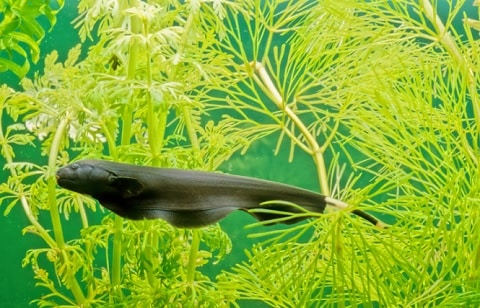
It has no scales, which increases sensitivity to changes in water conditions and increases vulnerability against diseases – making it even more important for proper care through suitable environment understanding, especially regarding this fish’s unique features.
When selecting these fish from a fish store, look for the white markings on the tail. They should have double white marks. If they are missing this, it is likely that the fish has been nipped or bullied. You will want to avoid fish that have been harassed as they are under too much stress to be transferred successfully. Bullying is common in crowded tanks – and local fish stores are known for purposely overcrowding their tanks.
Size And Growth
When you want to get a Black Ghost Knifefish, it’s important that you take into account their size. These fish can reach up to 20 inches (51 cm) in length and are capable of growing as much as 8 inches (20 cm) during the initial year. The growth rate slows down to about 2 inches per annum after the first year, faster in larger tanks. This has an effect on tank requirements along with what other species of fish could be housed together.
Tank Size And Requirements (Black Ghost Knife Fish Care)
When setting up a habitat for the Black Ghost Knifefish, it is important to take into account their size and unique traits. An aquarium of at least 100 gallons (125 galloons is recommended) should be provided per individual. Adding an extra hundred if there are two or more fish as they may act aggressive with one another.
Replicating natural environment by decorating with soft substrate along with providing places where your Black Ghosts can hide will certainly improve its well being, enhancing its life span significantly.
Water Parameters And Conditions
To ensure a safe environment for the Black Ghost Knifefish, it is essential to maintain certain water parameters and conditions. The fish thrives in an aquarium with 6.0-8.0 pH level, 5-19 dGH hardness and water temperature between 73°F – 82°F.
Stability of these values should be a priority at all times since sudden changes can cause great stress or even illnesses to this species called the ghost knifefish (Black Ghost). To guarantee that tank water stays clean & free from any pollutants, frequent testing as well as regular partial water changes are extremely important in order to keep them healthy!
Tank Decorations And Hiding Places
Providing a range of hiding spots such as clear PVC pipes, rock caves, pleco caves and driftwood alongside aquarium plants is very important for the health of Black Ghost Knifefish. Keeping low levels of lighting in their tank will allow them to feel most at home due to their nocturnal nature.
Editor's Choice
Manzanita offers it all. Great shape, low tannins, quick to water log and reasonably priced. It's the ultimate driftwood!
In order not to hurt its delicate skin, it’s also crucial that you use soft substrate like sand on your bottom bedding rather than gravel or stones which are found more commonly with other fish species habitat-wise. By replicating what they would find in their natural surroundings, the Black Ghost Knifefish should thrive happily when living within an aquarium environment!
Natural sand is excellent for bottom feeder fish to forage around in.
Feeding
Looking after your Black Ghost or Knifefish involves giving them a balanced diet to meet their needs. As carnivores, they require an adequate supply of live or frozen protein sources for nourishment and strength in immunity. For best results, feed the fish just once every day during twilight hours as this is when it tends to be most active being nocturnal fish. Keeping up with such regular dietary intakes will allow you to ensure that your fish stays healthy while properly fed.
Preferred Foods
Black Ghost Knifefish should be provided with a variety of meals that are similar to what they would find in their natural environment. These may include things like live or frozen items such as bloodworms, brine shrimps, black worms, tubifex worms and other sources of protein like krill and prawns.
Frozen bloods are a great source of protein and a fish source fish naturally respond to. Very filling and works for just about any fish
Although they can also consume pellets or flakes, it might take some time for them to get accustomed to these food forms too. Flake food is also not going to be enough substance for these fish. Thus providing the right diet is important if you wish your Black Ghost Knifefish stay healthy and strong over time!
Feeding Schedule
Black Ghost Knifefish, which are nocturnal creatures, should be given their meals once a day in the evening as this is when they are most active. It’s essential to note how much your fish eats and not let it overeat because it can lead to declining water quality – if there isn’t any noticeable decrease after only a few minutes then reduce portion size accordingly. When introducing them into an unfamiliar environment try mimicking its natural habitat so that it will feel comfortable enough to start eating regularly again.
Social Behavior And Compatibility
The Black Ghost Knifefish is a solitary creature that emerges in the evening to hunt for food and likes to be on its own. If given enough space, they can exist amicably with other fish. Though if kept in too small enclosures, aggression may ensue. When selecting tank mates it’s vital to take into account their size and nature so to guarantee peaceful coexistence within a community aquarium.
Black Ghost Knife Fish will eat small fish or invertebrates making them incompatible with many schooling tropical fish – thus understanding their social behavior when combined with others forms an essential part of setting up your shared habitat harmoniously which meets everyone’s needs perfectly!
Compatible Tank Mates
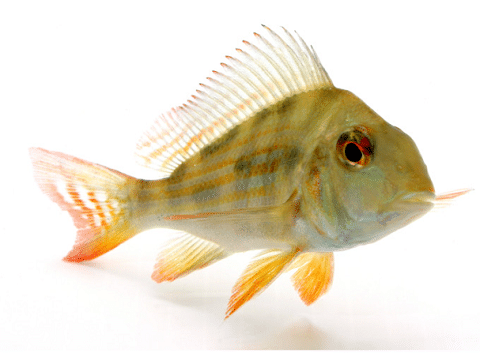
For a harmonious environment, suitable tankmates for the Black Ghost Knifefish include peaceful fish such as neon tetras and other larger community species. It’s important to pick tankmates of similar size and temperament in order not to cause harm or stress to the knifefish. Here are a few good picks:
- Geophagus “eartheater” cichlids
- Friendly catfish over 6 inches (15 cm)
- Common plecos
- Silver dollars
- Severums (As long as Severum is solo)
- Bichirs
- Bala Sharks
Bad Tank Mates
When introducing tank mates to your Black Ghost Knifefish, it is of great importance to stay away from small fish such as neon tetras and guppies since they can be swallowed by the ghost knifefish which might cause damage or death. It’s necessary for you to choose compatible companions, both in size and nature, so that all inhabitants are kept safe. Here are also some bad fish:
- Aggressive cichlids
- Other Ghost Knife Fish (they are aggressive to their own kind)
- Elephant Noses
- Baby Whales (Brienomyrus brachyistius)
You may see other blogs and forums state fish like Elephant noses are okay. I will say that fish that generate electrical impulses/current like them will upset fish with similar systems. This is why the Elephant Nose is a bad choice. They usually fight at night too – and you will see the aftermath in the morning!
Common Health Problems
The Black Ghost Knifefish is especially vulnerable to skin ailments such as Ich and other parasitic infestations due to their lack of scales. It’s important for the owners of these fish to be aware of potential health issues in order to ensure its wellbeing.
Apart from diseases, stress can also occur with changes in water temperature, bullying, diet or light exposure which should all be monitored carefully by ghost knifefish keepers so they may address any problems quickly before it causes significant damage.
Preventative Measures
Maintaining optimal water parameters and providing a suitable natural habitat can ensure that your Black Ghost Knifefish stays healthy. It is important to maintain consistency in temperature, pH levels, and salinity, as well as regularly change the tank’s water content.
You should provide them with plenty of hiding places or decorations which simulate their usual environment while also ensuring they receive balanced nutrition without overfeeding them for full health benefits. By taking these precautions, you will create an ideal living space for your ghost knifefish so it remains happy and healthy long-term.
Breeding Challenges and Considerations
Breeding Black Ghost Knifefish in a domestic aquarium is difficult due to Indonesian fisheries’ secret techniques for breeding them. To optimize success, the ideal environment should have a low level of light and sound, along with stable temperatures that necessitate frequent water changes.
When eggs are laid, they may take three days to hatch, at which point feeding infusoria or brine shrimp nauplii as well as powdered fry food would be appropriate nutrition sources for young fish. In any case, when attempting black ghost knifefish reproduction, it is imperative that you always prioritize their welfare above everything else during this process. Below is a quick video of Knife Fish fry (video source).
While there are no guarantees on successfully reproducing your own stock of this iconic species, such attempts can yield tremendous rewards if done correctly. Ultimately making all efforts worthwhile when observing beautiful adult specimens swimming happily around an aquascape!
Responsible Breeding Practices
When breeding the Black Ghost Knifefish, you must ensure their tank replicates its natural habitat. Maintain a constant temperature between 78-82°F and provide darkness and peace to create conditions similar to what is experienced in the wild when these fish spawn during the rainy season. Regularly change out some of the water for proper maintenance.
If successful with your efforts, it’s essential that you nurture any fry produced by transferring them into another aquarium kept at an appropriate temperature as well as feeding them live or frozen food options for optimal healthiness and nutrition. By following such practices responsibly, you can contribute greatly to preserving this remarkable species!
Frequently Asked Questions
How much do black ghost knife fish cost?
For a stunning aquarium inhabitant, the black ghost knife fish is an attractive option! This type of fish can generally be purchased for under $25 each when small and provides beautiful display value.
These aquatic creatures are known to have good longevity. They are capable of surviving up to 10 years when given proper care and attention in compatible water conditions that vary from medium-hard waters to soft acidic aquaria. Ghost knives make excellent pet companions due to their peaceful nature as well as how easy it is to look after them overall.
How long do black ghost knife fish take to grow?
Black ghost knife fish can reach up to 24 inches (60 cm) in only two years if they are provided with the right environment and nutrition. This species of fish, when purchased. Measures a couple of inches, but with proper care it can grow quickly into its full size. An ideal tank for them should have at least 100 gallons (113 liters) capacity as well as maintain an optimal temperature range for their growth. With correct conditions met, you will find your black ghost or Ghost Knife Fish reaching maturity within two years!
What fish go well with black ghost knife?
For tankmates for your black ghost knife fish, think about peaceful types such as geophagus cichlids and some other friendly sizable catfish. These kinds of aquatic creatures will certainly bring variety to the aquarium environment while providing much fun!
What is the ghost fish?
A ghost fish is a fish from the knifefish family Apterontidae. They are originally from South America and grow large, with many varieties growing over 18 inches in length. They are generally peaceful, but due to their large size they may smaller fish as they get larger.
How big does a ghost fish get?
The Black Ghost Knifefish is quite an impressive creature when mature, as it can grow up to 20 inches long. If you want to house this species of fish in your home aquarium, then a minimum tank size of 100 gallons must be provided.
Due to the sensitivity that these ghost knifefishes have to changes in water conditions and environmental parameters such as temperature and pH. Close attention should always be paid to their habitat so any alterations are monitored regularly for them to feel comfortable and safe within its living space.
Closing Thoughts
In closing, taking proper care of the Black Ghost Knifefish necessitates understanding its natural habitat and other necessities such as tank requirements, nutrition habits, social behavior and potential health issues. To give them a pleasant home environment that resembles their native setting where they can thrive is essential. This means following all the advice included in this article.
Remember that being responsible when dealing with these extraordinary creatures is key to ensure their optimal wellbeing. As you carry on your journey along side your Black Ghost or Ghost Knifefish companion, make sure it has what it needs so both you enjoy a lovely time together!
Ever kept these tropical freshwater fish before? Let us know your experience with the Black Ghost Knife Fish in the comments below!
- About the Author
- Latest Posts
I’m thrilled that you found Aquarium Store Depot! Here you’ll find information on fish, aquariums, and all things aquatics related. I’m a hobbyist (being doing this since I was 11) and here to help other hobbyists thrive with their aquariums! I adhere to a high quality Editorial Process and Review products with real life field usage and practical analysis.

